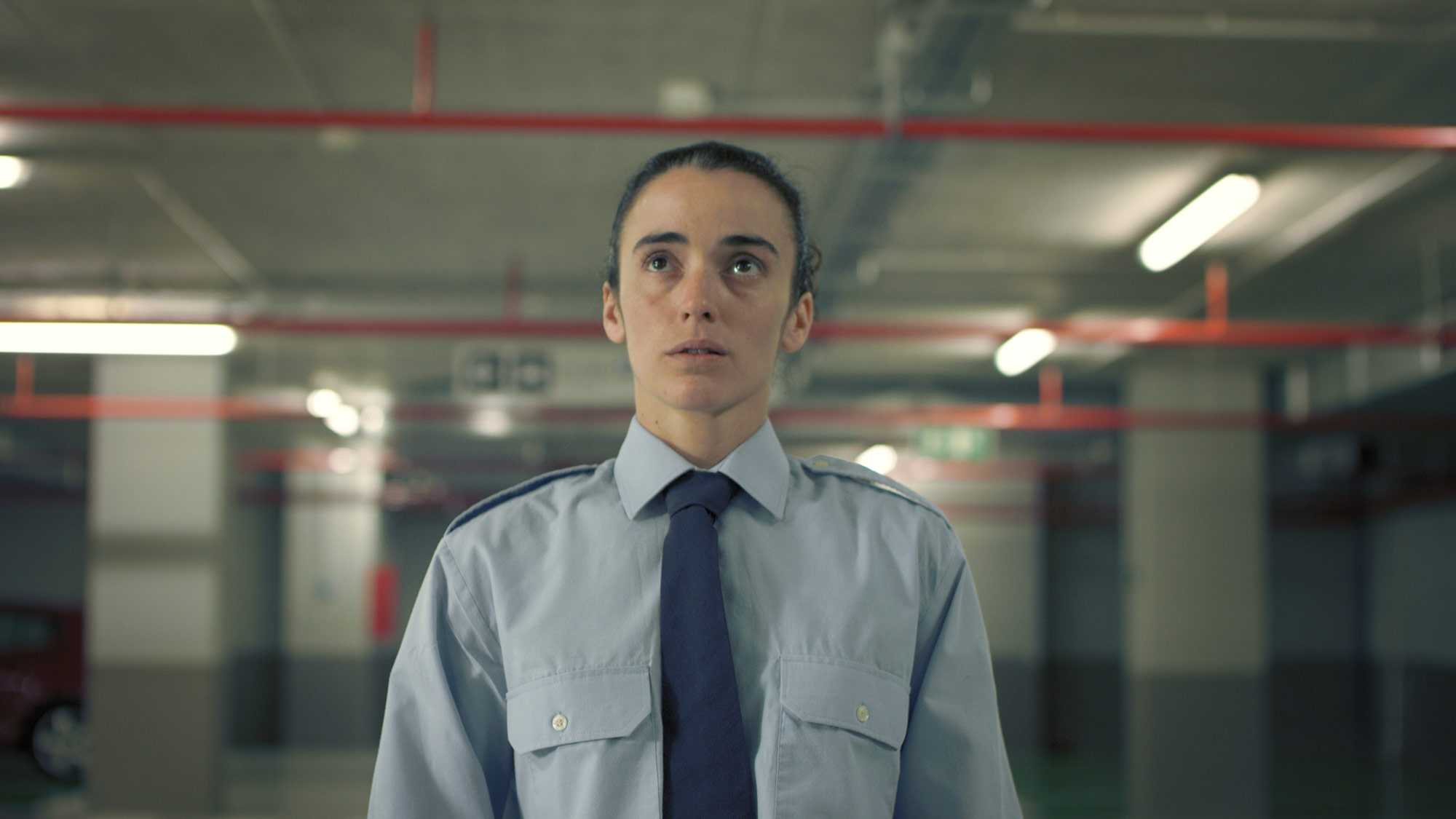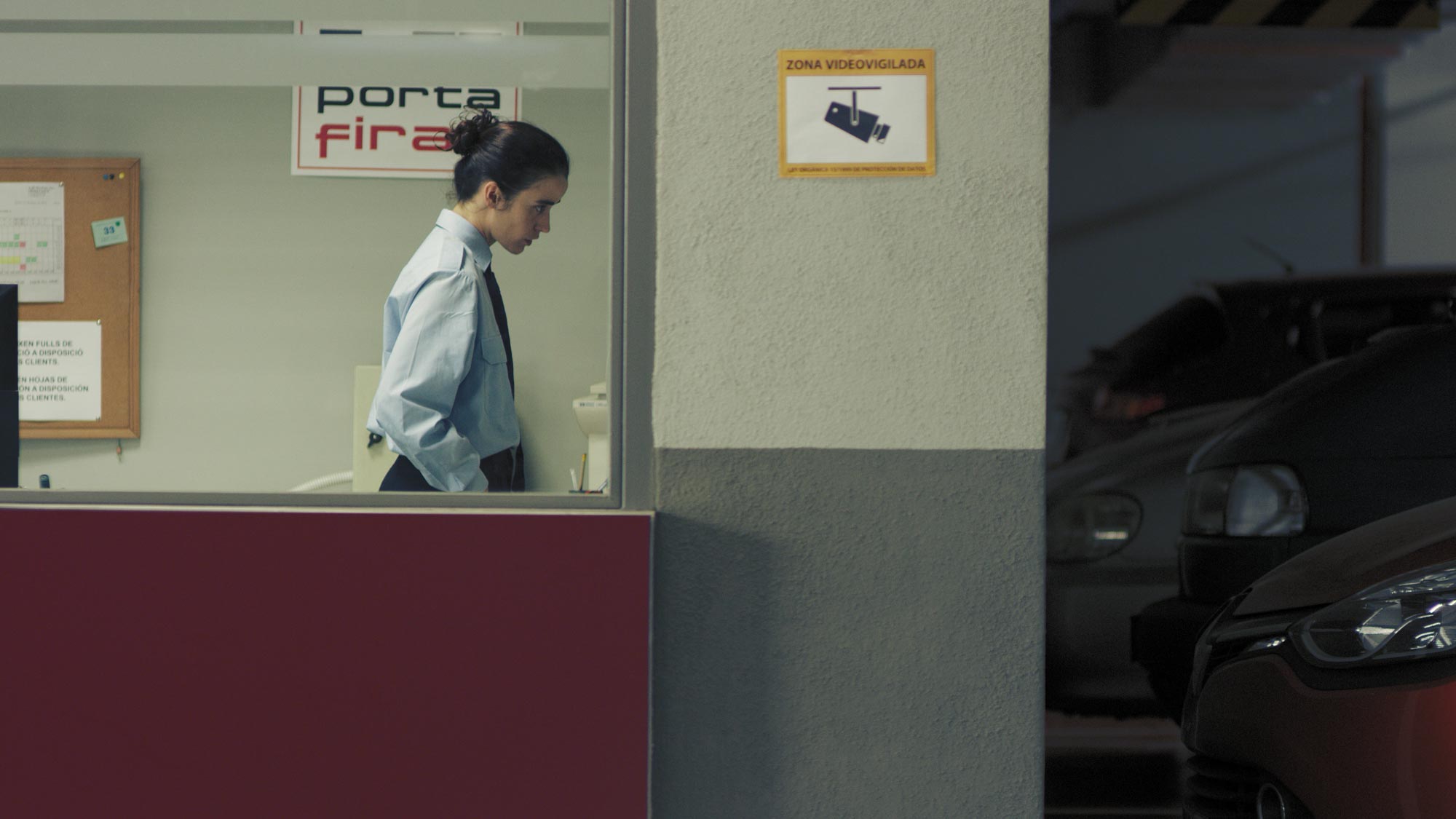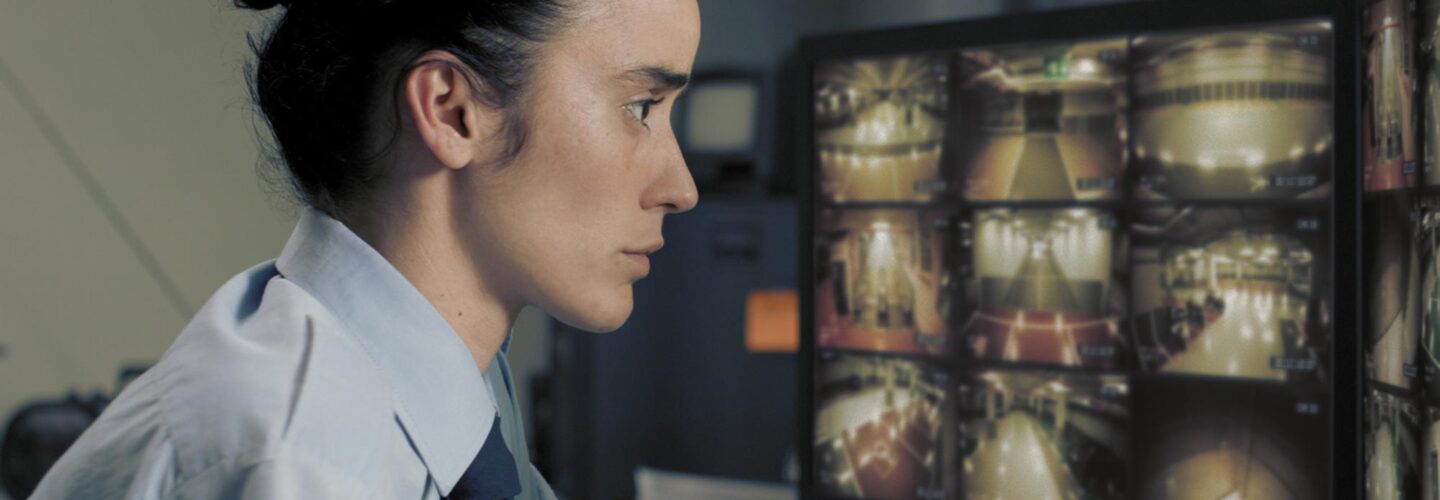
Despite my not so secret love of the form, I’d be the first to admit that many dance films bring with them an air of inscrutability, their meanings seemingly only accessible to an art appreciating elite. And so, it was an all too rare delight to see Director Juanjo Giménez employ the considerable choreographic talents of Spain’s Lali Ayguadé in his Palme d’or winning short Timecode – a narrative which on first glance feels conventional, before being elevated by the hidden displays of self-expression which play out in graceful contrast to the sterile uniformity of their parking lot setting. One of 10 films (out of 137 initial qualifiers) currently being considered for the final 89th Academy Awards short film selection, DN caught up with Juanjo to discuss his career long dedication to short filmmaking and Timecode’s inventive subversion of CCTV’s repressive role within society.
Most filmmakers abandon shorts once they graduate to features but as a Director and a Producer shorts have remained a constant throughout your career. What is it about short form storytelling which draws you back time after time?
After some films as director, I learned that short films usually fit better the way I approach filmmaking. And what’s more important, there’s nothing wrong with that! That doesn’t mean I won’t make a feature film again, but shorts provide a better platform for experimenting without the financial struggles that usually constraint a fiction feature. And even if I speak as a producer, in terms of financial results, my shorts have always been more profitable than my features.
What makes this story different is that CCTV systems are not intended to be used as communication tools.
The role of security guard and the use of CCTV are viewed as cold mechanisms which stifle deviation from and enforce the ‘rules’. Where did the concept for a film in which both are co-opted into the service of free expression and the forming of a connection come from?
We used to blame technology for preventing real communication. We communicate with other people through screens constantly these days, but we now consider this way of communication a substitute for the real thing. What makes this story different is that CCTV systems are not intended to be used as communication tools. We usually associate surveillance systems with crimes or bad behaviour, and that’s a film cliché. It’s this contrast that makes the story of Timecode so powerful. I had already worked on previous films with situations happening in an unexpected place, for example in Indirect Free Kick a discussion between a goalkeeper and his girlfriend takes place in the middle of a soccer match instead of at a bar or an apartment, as would be expected. On the other hand, CCTV cameras permit us to peep in on something that normally we are not allowed to watch. That’s like tasting the forbidden fruit, and it’s one of the essences of cinema in the first place: living other people’s intimacy without any risk.

How did you come to cast Lali Ayguadé and Nicolas Ricchini as your leads? Did their work together in Incognito play a role?
I wanted professional dancers as the main characters, but we didn’t go through a normal audition process. I chose them while watching a Catalonian TV program about emerging choreographers and dancers. Of course, some of the choreography used in Timecode comes from Incognito, the show that Lali and Nico were performing at that moment. The fact is that we didn’t have much time for rehearsals, so we preferred to have a couple that were accustomed to dancing together. But neither of the two had previous experience in film or theatre, so I was focused more on giving them normal acting guidance for dramatic scenes, rather than in dance sequences where they are the real masters.
Parking structures are by their nature these vast, monotonous spaces, in what ways did that space and its mundanity inform the film’s expressive choreography?
Actually in the original script, the location was meant to be an old and gloomy parking lot, but the parking garage we were offered for shooting was completely new. We took advantage of the lift installations and the moving walkways, which gave the film an atmosphere we hadn’t intended at first, but that we later thought could match very well with the storyline. As I said, choreography was all the responsibility of Lali Ayguadé. I stepped in only when dancing implied a narrative intention, and especially for the integration with the space. We chose the concrete shooting places inside the parking area even before Lali and Nico were recruited. When they were on board, some choreography was prepared exclusively for the location, but every decision in that field was always discussed between the two dancers and myself. A lot of dance films search for weird or inspiring spaces in order to enhance the dance experience. What makes Timecode different is that Luna and Diego are security guards, not dancers. And people in uniform usually don’t dance in parking lots. But that’s a big spoiler…
How did integrating the CCTV elements of the film, as well as knowing that you’d be capturing the dance sequences within that structure influence your choice of camera and shooting gear?
All the CCTV shooting was created with a GoPro hooked on a long stick. In fact, the real CCTV of the parking doesn’t allow pointing directly at cars or people – only common spaces, elevators, aisles and entrances are allowed to be covered. The stick and the mini cameras allowed us to be really quick preparing the shot, and choosing the places according to our needs. The final look for the CCTV footage was set in post-production. Together with the Cinematographer, Pere Pueyo, and the Colorist, Toni Mena, we decided the cinematography of the narrative part needed to be less saturated and contrasted than the CCTV footage – the contrary of what was expected. We decided this after considering the green, yellow and red of the parking lot floors, and that life and hope are more present in the CCTV screens than in the narrative bits of the short.

The dance that the characters perform and view through the CCTV is silent until it finally meets Iván Cester’s whimsical score at the end of the film. What references did you share with Iván to direct the composition?
On the set, Lali and Nico always danced without music. Maybe they had in mind the music they use in Incognito, which is very different than the final Timecode score, I don’t know. The process with the composer, Iván Cester, was quite tortuous. We tried several drafts before the final one. I used In the Mood for Love or the main theme from Slow West as reference music, but Iván did a great job finding the right tune at the end.
Putting yourself in unknown territory makes the creative process more rewarding at the end.
You’ve mentioned that during the creation of Timecode you discovered a previously unknown artistic discipline. What about this film was different from your earlier work?
When I was in film school, some people advised me to write about things I knew well. After my first scripts, I instead tended to explore themes and disciplines I’m interested in, but I didn’t know very well. Like dancing in Timecode, or boxing in Dodge and Hit. Putting yourself in unknown territory makes the creative process more rewarding at the end.
Will Timecode make its way online in the near future?
Currently Timecode is still doing the festival circuit. We have plans to release it in theaters in Spain and some other countries, accompanying a feature. After that it will be online. I share those decisions with my distributor, Marvin & Wayne.
Are there any new projects you have in development which you can tell us about?
I’m preparing for the shooting of another short, and I’m in the process of writing a feature film. Nothing to do with dance this time!


